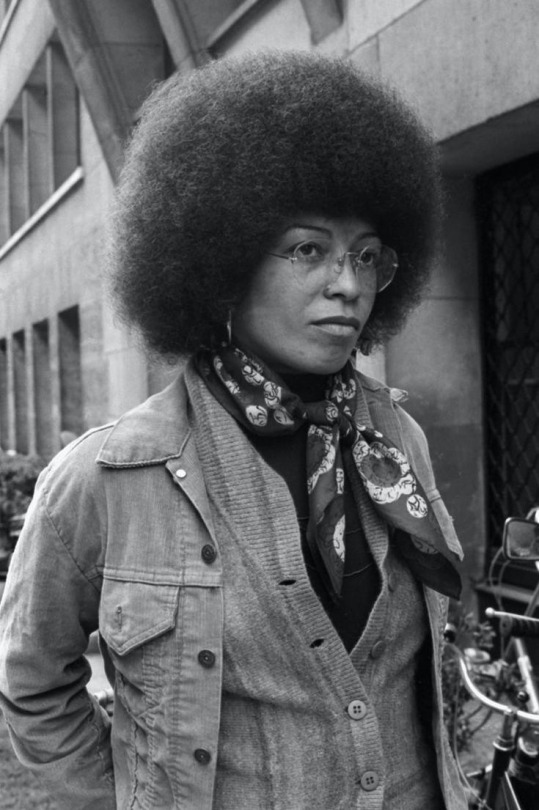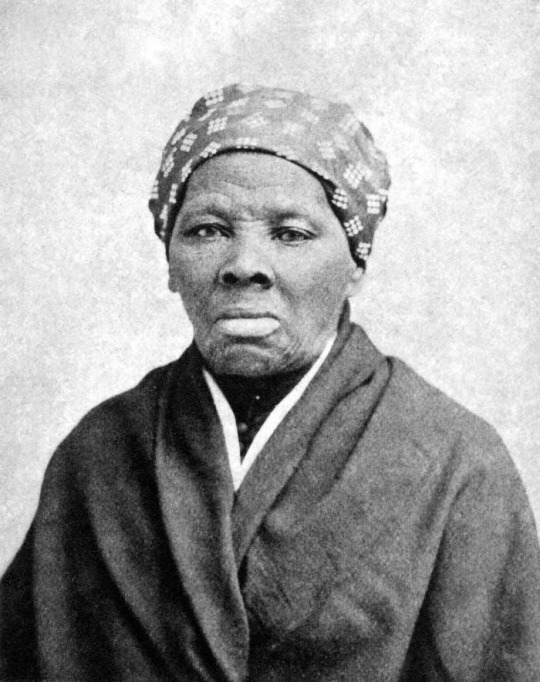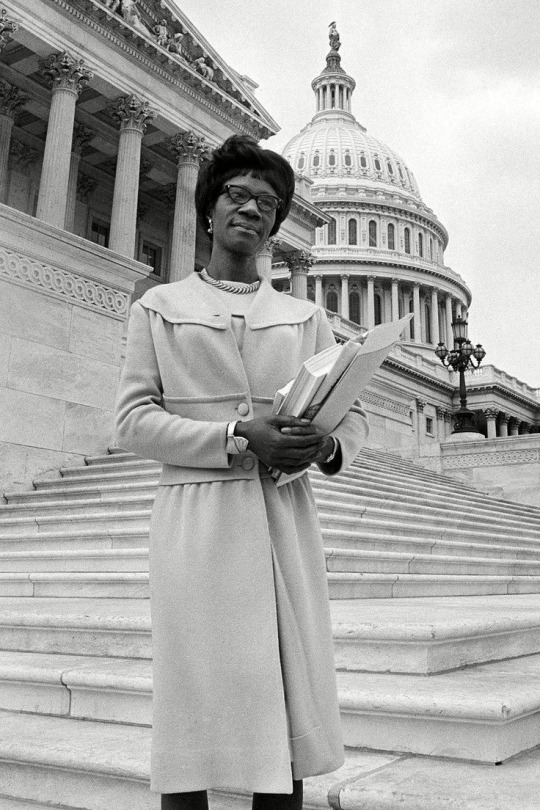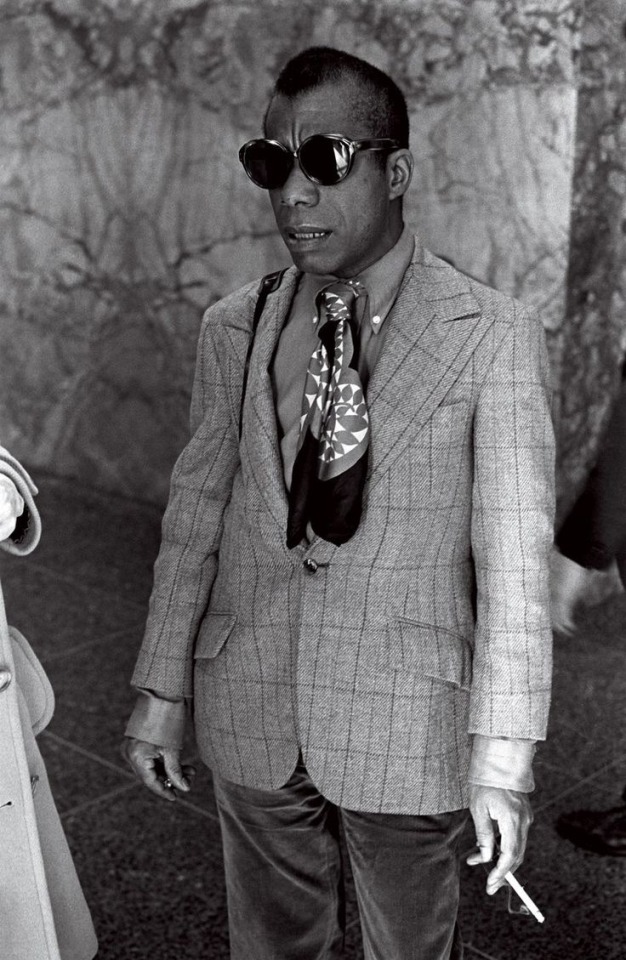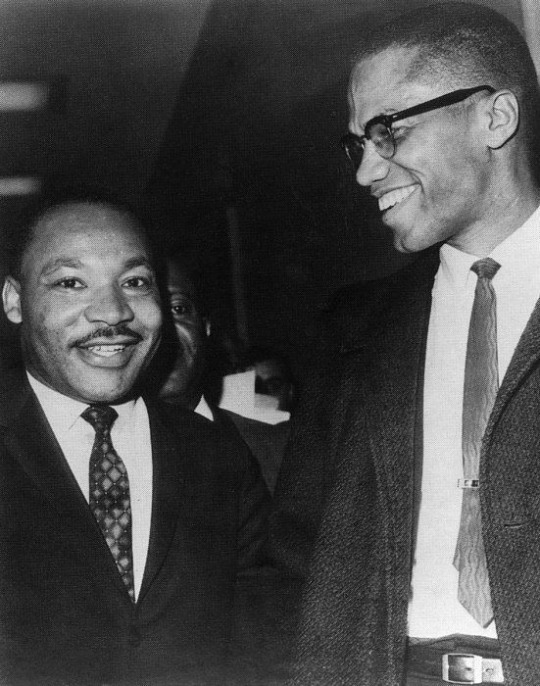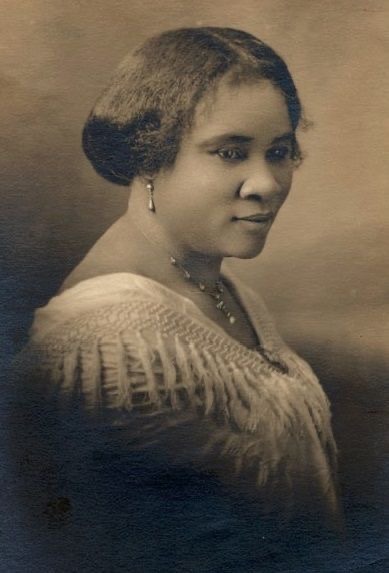#Active History
Text
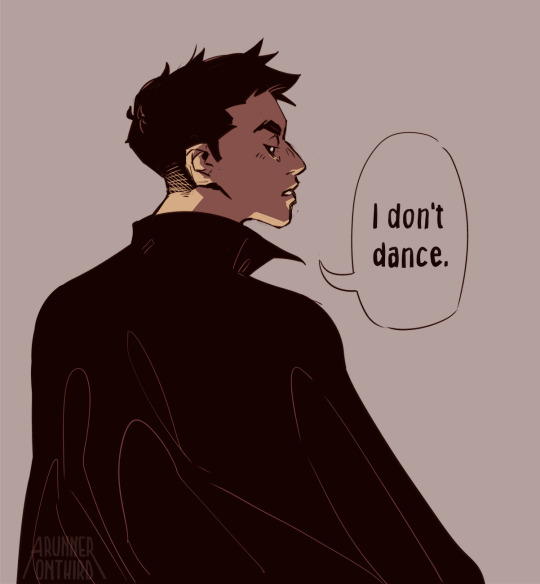

did u know 9 year old damian was canonly exactly like this
#this quote is from a 300k naruto fic called the blessed realm which i actively refuse to read but this quote is gay history#also hi im back im struggling to draw but im on it#damian wayne#batman#dc comics#ladies. gentlemen. you have eaten well.#my art
8K notes
·
View notes
Text



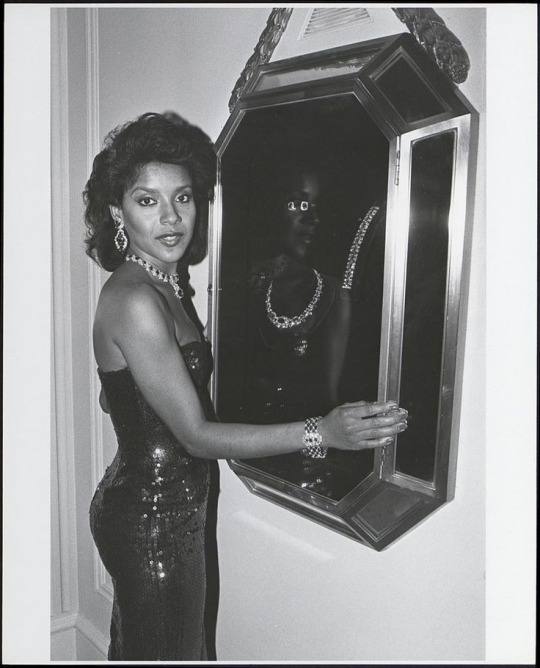
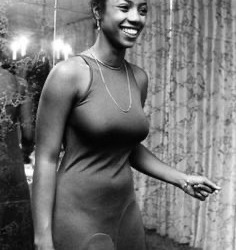
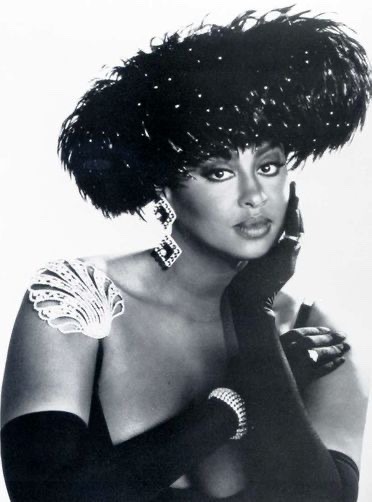

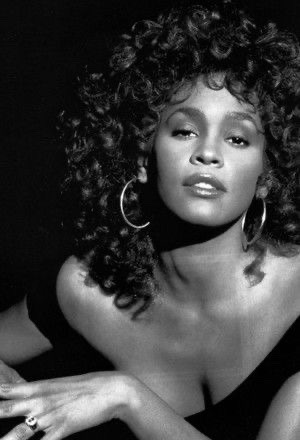

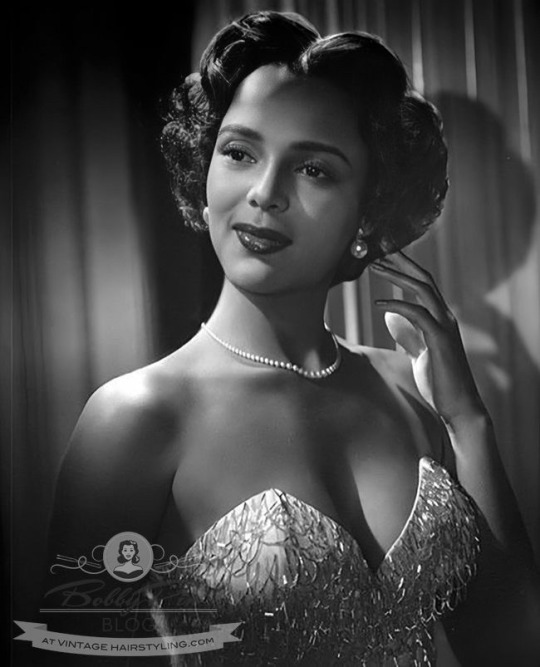
Happy Black History 🤎
#black girl aesthetic#black girl blogger#black girls of tumblr#pinterest#black girl joy#black girl magic#soft life#black boy aesthetic#cottage core black#black business man#black girl moodboard#black history#black actors#black actresses#black activism#freedom
13K notes
·
View notes
Text

"We do not have the responsibility of making gay life look good to straights so that they will accept us. I am not at all interested in promoting a cleaned up image to a straight world which is twice as corrupt and ten times as sick."
Vito Russo
Photography by Betty Lane, 1978
#gay#queer#lgbtq#lgbt#lgbtqia#lgbtpeople#activism#actuvist#queer history#culture#gay culture#queer culture#gay history#lgbtq history#lgbt history#history
17K notes
·
View notes
Text
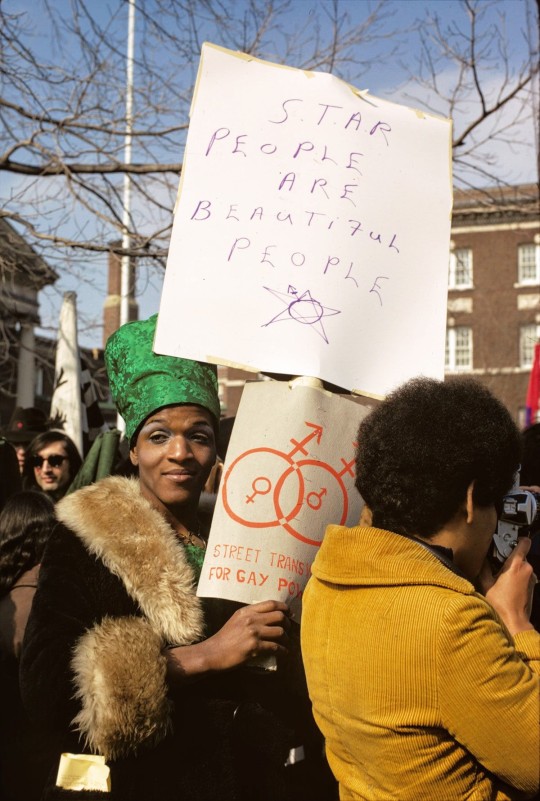
Marsha P. Johnson, co-founder of Street Transvestite Action Revolutionaries, at a gay rights demonstration in Albany, New York, March 14, 1971. Photo by Diana Davies.
#1970s#community#people#blm#culture#street#society#queer#trans#pride#gender#activism#black history#lgbtqia#humanity#queer history#marsha p johnson#70s#transgender#politics#counterculture#🌈
18K notes
·
View notes
Text
why are skirts inherently evil and oppressive in historical fiction until men are wearing them
I've never heard anyone going on at length about how Universally ImpracticalTM the garb of a Scotsman or an ancient Roman politician are
suddenly everyone has a concept of situational practicality that previously was not there
#history#clothing history#historical fiction#'SKIRTS are so IMPRACTICAL-' always? every time? for everyone?#because I don't know about you but I live in a city and work in museums#skirts are A-okay for me#also people have done MANY types of physical activity in skirts for centuries. sometimes pants are more practical for sure!#but. not always.#and you never hear fiction authors talking about how oppressed Scotsmen are by their kilts#'he couldn't FUNCTION because he wasn't wearing PANTS!' I'd like to see someone try it
2K notes
·
View notes
Text
“I am typing these words as June 2003 surges with Pride. What year is it now, as you read them? What has been won; what has been lost? I can’t see from here; I can’t predict. But I know this: You are experiencing the impact of what we in the movement take a stand on and fight for today. The present and past are the trajectory of the future. But the arc of history does not bend towards justice automatically—as the great Abolitionist Frederick Douglass observed, without struggle there is no progress . . .”
- Leslie Feinberg
#stone butch blues#leslie feinberg#activism#praxis#social justice#power to the people#workers of the world unite#communism#queer history#queer rights#queer
8K notes
·
View notes
Text
“ Are butches butches because they love femmes? Or because there’s something about our gender expression? It would seem to be just sort of a moved point. Like how many angels can dance on the head of a pin, which came first the butchness or the lesbianism. Except, there’s another one of these great misunderstandings. If you simply identify that butch and femme go together like love and marriage, horse and carriage. Soup and sandwich. Then it leaves out butches who are attracted to other butches. It leaves out femmes who wanna be with other femmes. It leaves out bisexual butches. It leaves no area at all to define why some women are so masculine and yet are heterosexual. To me, being butch doesn’t mean what you do in bed. I mean to be butch on a street, that’s what being butch is to me.”
Butch Activist and Author, Leslie Feinberg
Timestamps for quote: 19:39 - 20:37
#dykeposting#lesbian history#lesbian#lesbian pride#bisexual#sapphic history#lesbian blog#sapphicism#lesbianism#sapphic solidarity#leslie feinberg#sapphic butch#quotes#90s queer theory my love#queer activism#queer history#butch lesbian#bi butch#butch4butch#bi butches exist#quote#butch identity#butch appreciation#sapphic blog
843 notes
·
View notes
Text

Outrage! sticker, 1991
#cool#outrage#queer nation#act up#queer history#sticker#activism#paragraph 16#section 28#homophobia#queer#lgbt#lgbtq#lgbqti#1991#1990s#90s
3K notes
·
View notes
Text

#muhammad ali#blackisbeautiful#blackness#blacktivism#black history#the black narrative#activism#belovedcommunity#blacklove#blacklovematters#blackloveisblackpower#blackloveisrevolutionary#blackpeople#Iloveblackpeople#ilovebeingblack#rootingforeverybodyblack#allblackeverything#problack#panafricanism#african heritage#afrocentrism#blackpeopleinamerica#blackactivism#blacklivesmatter#blackpride#blackpower#blacktumblr
801 notes
·
View notes
Text

Xenobia Bailey Envisions a Distinctly African American Aesthetic One Crochet Stitch at a Time
810 notes
·
View notes
Note
No normal person was ever 600 lbs 100 years. Not a single one. It's not healthy or safe for anyone to be that large
Not a single one, eh? Are we gonna attempt to back that up with anything of substance whatsoever or are we just echoing eugenics into a fat person’s inbox and calling it a win? Sit down, bucko.
You know what else isn’t “healthy” or “normal” to be? Disabled. Yet disabled people have always existed. Imagine that!
Wild to think that part of being human means having a variety of differences in the formation and function of our bodies, and that our health status does not determine our right to exist in those bodies.
The eldest of these artifacts dates to over 30,000 years ago. A timespan longer than you or any mortal person can truly comprehend. We’ve been here since the beginning of humanity and we are still here. Fat people, specifically fat Black women, have roamed the earth long before colonization twisted perception of reality into hierarchy and poisoned the minds of generations to view certain human beings as disposable. Fat people have always existed and always will, no matter how much you fantasize about a past and future rid of us.

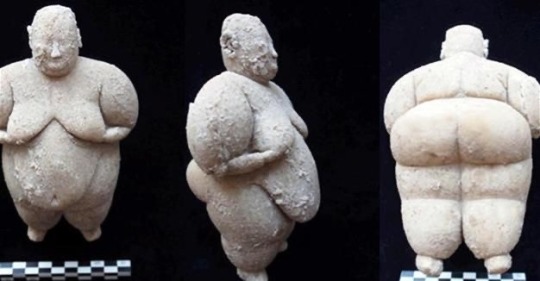




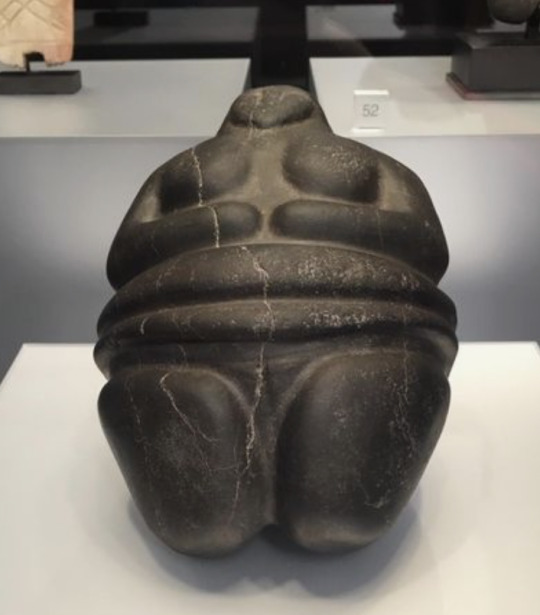
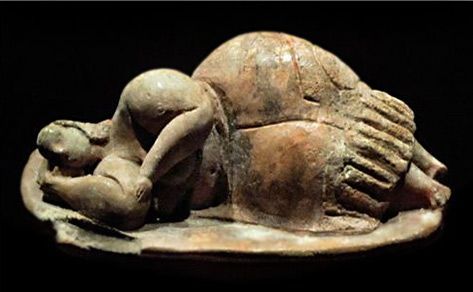
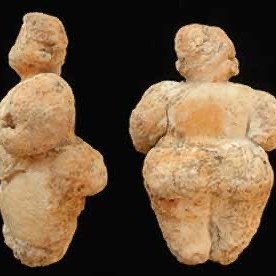


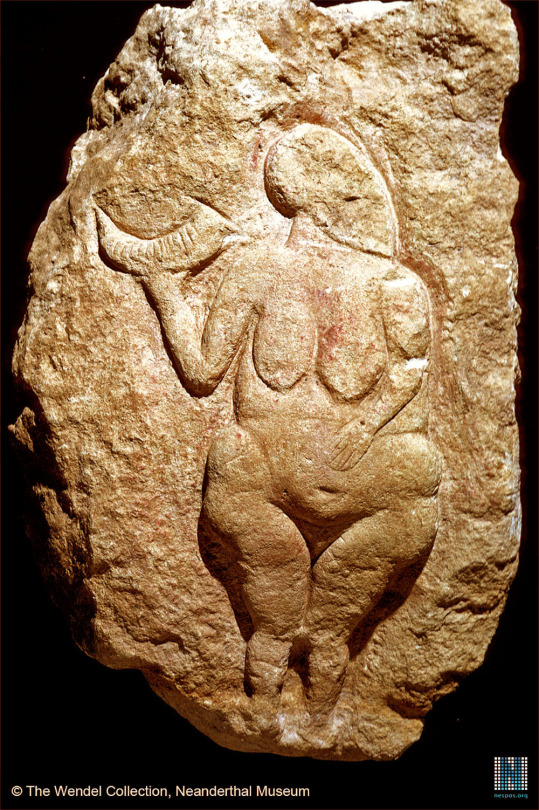


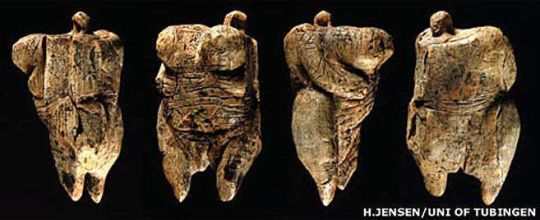
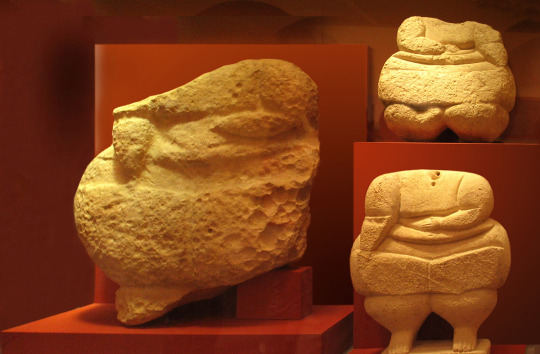
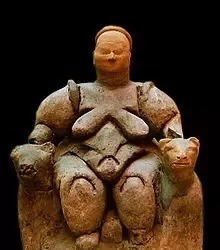
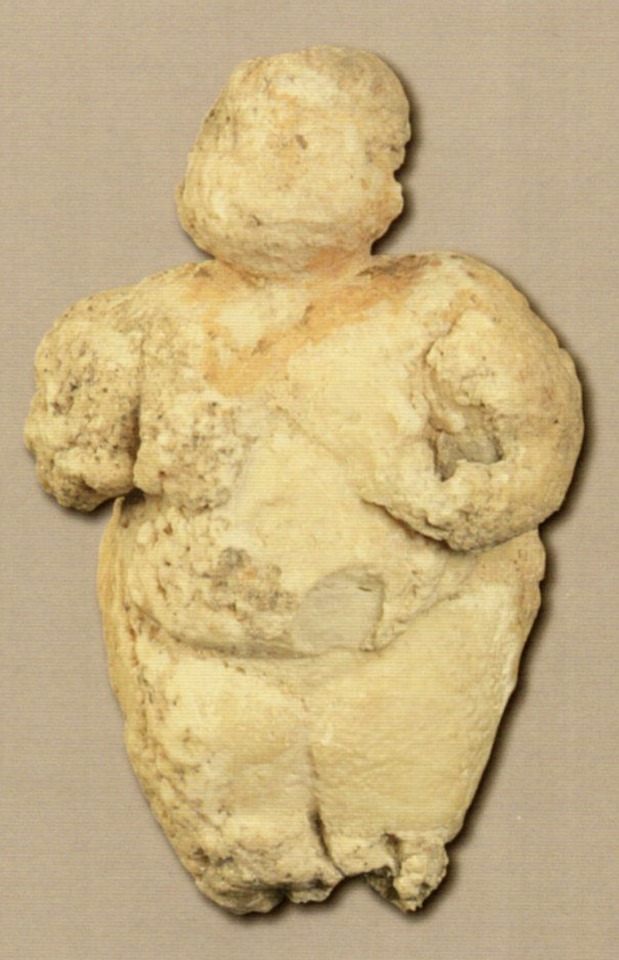

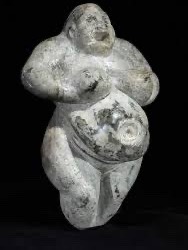
“How many statues of Black women do the ancients have to hide for you to dig up and understand what God looks like. How many times do fat Black women have to save your life in song. What are you paying attention to? This is why you can never see God in yourself. You are damned by hatred of fat Black women. And no part of you could ever live without them. This is why the universe (huge, black, unfolding, expansive) shakes and shakes her head, you fools. You wasteful fools.” Alexis Pauline Gumbs, M Archive: After The End of The World
#fat liberation#fat acceptance#fat activism#anti fatness#fatphobia#fat history#inbox#colonialism#colonization#artifacts#anthropology
3K notes
·
View notes
Text








There is nothing to celebrate today. If you are one of the lucky few with today off (as I am), take some time to learn why.
#LandBack
Repost from @intersectionalenvironmentalist
•
There is no pride in genocide.
As the U.S. celebrates Independence Day, we cannot dismiss the continuous acts of injustice against Black and Indigenous people.
✏️About the Researcher: @kianna_pete
Kianna was a Spring 2022 Social Media Fellow at IE and studied political science and ethnicity & race studies with a specialization in Indigenous/Native studies at Columbia University. ✨
💻Sources:
peoplesworld.org/article/july-4th-whose-independence-day-is-it/
nbcnews.com/news/us-news/six-things-you-didn-t-know-about-
fourth-july-n779331
smithsonianmag.com/blogs/national-museum-american-indian/
2020/07/01/do-american-indians-celebrate-4th-july/
meaww.com/independence-day-july-4-native-americans-do-they-celebrate-lost-traditions-early-suppression
culturalsurvival.org/news/united-states-independence-masked-genocide-and-imperialism
#fourth of july#4th of july#july 4th#human rights#indigenous#indigenous rights#colonization#colonialism#colonial violence#decolonization#turtle island#united states#us government#us politics#justice#activism#enviromentalism#climate crisis#climate justice#native american#us history#american history
389 notes
·
View notes
Text

Angela Davis December 1971, by Sal Veder.
#angela davis#1970s#black power#politics#black tumblr#academia#black history#20th century#70s#activism#feminism#community#retro#marxism#anarchy#b&w#smoking#women#civil rights#philosophy#📚 🚬
785 notes
·
View notes
Text
Taylor Swift is a Female Rage icon? Get a Grip.
I’ve just received word that Taylor Swift is calling her show “Female Rage: The Musical.” Here is my very much pissed off response to that nonsense:
The phrase, Female Rage has an intimately rich history:
Some of the first accounts of female rage dates to the Italian renaissance. To be clear, women in those days were not allowed to become painters- the arts were seen as the domain of men. They did not believe that women have rich inner lives capable of delivering the type of artistic innovation with which renaissance men were obsessed.
However, rebels abounded, through the might of their fucking rage. Several women created some of the most compellingly emotional paintings I’ve ever fucking seen. They did it without permission, without financial support, and often under the threat of punishment. They did it as a protest. In paintings like “Timoclea Killing Her Rapist” by Elisabetta Sirani (1659), and another by Artemisia Gentileschi “Slaying of Holofernes” (1612) as it depicts the bravery of Judith as she slayed a traveling warlord out to rape Judith and enslave her city. The painting often is referred to as a way Artemisia was envisioning herself as slaying her rapist. These paintings were used against these women as proof that they were unfeminine- and far too angry. Both these women suffered immensely for their audacity to call attention to the violation men perpetrated on them. Female Rage bleeds off these paintings- bleeds right through to the bone-deep acknowledgement of the injustice women faced being barred from the arts and having their humanity violated in such a sick way. Both women were hated- and considered far too angry.
In philosophy, also as early as the 15th century, an example of female rage is a philosophical text, often hailed as one of the first feminists works in the western world, written by Christine de Pizan titled The City of Ladies (1405). She wrote in protest on the state of women- writing that “men who have slandered the opposite sex out of envy have usually know women who were cleverer and more virtuous than they are” (“The City of Ladies”). People mocked her all her life- but she stood fast to her convictions. She was widowed at a young age with children to feed and the men wouldn’t let women have jobs! She wrote this book and sold it so that she could feed her family- and to protest the treatment of women as lesser than men. Her work was called aggressive and unkempt- they said she was far too angry.
In the 18th century, a young Mary Wollstonecraft wrote, A Vindication of the Right of Women ( 1792) upon learning that the civil rights won in the French Revolution did not extend to women! She wrote in protest of the unjust ways other philosophers (like Rousseau) spoke about the state of women- as if they were lesser. She wrote to advocate for women’s right to education, which they did not yet have the right to! She wrote to advocate for the advancement of women’s ability to have their own property and their own lives! The reception of this text, by the general public, lead to a campaign against Wollstonecraft- calling her “aggressive” and far too angry.
Moving into modernity, the 1960’s, and into literary examples, Maya Angelou publishes I know why the caged Bird Sings (1969) in which she discusses the fraught youth of a girl unprotected in the world. It beautifully, and heart-wrenchingly, described growing up in the American South during the 1930’s as it subjected her to the intersection of racism and sexism. The story is an autobiographical account of her own childhood, which explains how patriarchal social standards nearly destroyed her life. Upon the reception of her book, men mostly called it “overly emotional” and far too angry. Maya Angelou persisted. She did not back down from the honesty with which she shared her life- the raw, painful truth. With Literature, she regained a voice in the world.
Interwoven into each of the examples I have pulled out here, is the underlying rage of women who want to be seen as human beings, with souls, dreams and hopes, yet are not seen as full members of society at the behest of men. They take all that rage, building up in their souls, and shift it to create something beautiful: positive change. Each of these cases, I have outlined above, made remarkable strides for the women as a whole- we still feel the impact of their work today. They were so god-damn passionate, so full of righteous anger, it burst out into heart-stopping, culture-shifting art. Feminine rage is therefore grounded in experiences of injustice and abuse- yet marked too by its ability to advocate for women's rights. It cannot be historically transmogrified away from these issues- though Taylor Swift is doing her best to assert female rage as pitifully dull, full of self-deprecation, and sadness over simply being single or losing money. She trivializes the seriousness with which women have pled their cases of real, painful injustice and suffering to the masses time and time again. The examples above deal with subjects of rape, governmental tyranny, and issues of patriarchally inspired social conditioning to accept women as less human than men. It is a deadly serious topic, one in which women have raised their goddamn voices for centuries to decry- and say instead, “I am human, I matter, and men have no right to violate my mind, body, or soul.”
The depictions of female rage over the last few centuries, crossing through many cultures, is an array of outright anger, fearsome rage, and into utter despair. The one unyielding, solid underpinning, however, is that the texts are depicting the complete agency of the women in question. The one uniting aspect of female rage is that it must be a reaction to injustice; instead of how male depictions of female rage function, (think Ophelia), the women are the agents of their art with female made- female rage. They push forth the meaning through their own will- not as subjects of male desires or abuses, but as their own selves. That is what makes the phrase so empowering. They are showing their souls as a form of protest to the men who treat women like we have no soul to speak of.
Taylor Swift’s so-called female rage is a farce in comparison. Let’s look at an example: “Mad Woman” (2020). I pull this example, and not something from her TTPD set, because this is one of the earliest examples of her using the phrase female rage to describe her dumb music. (Taylor Swift talking about "mad woman" | folklore : the long pond studio sessions (youtube.com)
The lyrics from “Mad Woman” read “Every time you call me crazy, I get more crazy/... And when you say I seem angry, I get more angry”
How exactly is agreeing with someone that you are “crazy” a type of female rage in which she’s protesting the patriarchy. The patriarchy has a long history of calling women “insane” if they do not behave according to the will of men. So, how is her agreeing with the people calling her crazy- at all subversive in the way that artworks, typically associated with concept of female rage, are subversive. What is she protesting? NOTHING.
Then later, she agrees, again, that she's “angry.” The issue I draw here is that she’s not actually explicating anything within the music itself that she’s angry about- she just keeps saying she's angry over and over, thus the line falls flat. The only thing this anger connects to is the idea of someone calling her angry- which then makes her agree that she is... angry. So, despite it being convoluted, it’s also just not actually making any kind of identifiable point about society or the patriarchy- so again, I beg, what on Earth makes this count as Female Rage?
In essence, she is doing the opposite of what the examples above showcase. In letting an outside, presumably male, figure tell Taylor Swift what she is feeling, and her explicit acceptance of feeling “crazy” and “angry,” she is ultimately corroborating the patriarchy not protesting it. Her center of agency comes from assignment of feelings outside of herself and her intrinsic agreement with that assignment; whereas female rage is truly contingent on the internal state, required as within our own selves, of female agency. As I stated above, the women making female rage art must have an explicit agency throughout the work. Taylor Swift’s song simply does not measure up to this standard.
Her finishing remarks corroborates the fact that she's agreeing with this patriarchal standard of a "mad" or crazy woman:
"No one likes a mad woman/ You made her like that"
Again, this line outsources agency through saying "you made her like that" thus removing any possibility of this song being legitimate female rage. There is simply no agency assigned to the woman in the song- nor does the song ever explicitly comment on a social issue or protestation of some grievous injury to women's personhood.
She honestly not even being clever- she's just rhyming the word “crazy” with “crazy.” Then later rhyming “angry” with “angry.” Groundbreaking stuff here.
Perhaps Taylor Swift is angry, in “Mad Woman,” but it is not the same type of rage established in the philosophical concept of female rage of which art historians, philosophers, and literary critics speak. Instead, it is the rage of a businesswoman that got a bad deal- but it is not Female Rage as scholars would identify it. In “Mad Woman” I fear her anger is shallow, and only centered on material loss- through damaging business deals or bad business partners. She is not, however, discussing what someone like Christine de Pizan was discussing by making a case for the concept that woman also have souls like men do. In her book, she had to argue that women have souls, because men were unconvinced of that. Do you see the difference? I am saying that Swift’s concerns are purely monetary and material, whereas true examples of female rage center on injustice done against their personhood- as affront to human rights. Clearly, both things can make someone mad- but I’d argue the violation of human rights is more serious- thus more deserving of the title “Female Rage.”
Simply put, Taylor Swift is not talking about anything serious, or specific, enough to launch her into the halls of fame for "Female Rage" art. She's mad, sure, but she's mad the way a CEO gets mad about losing a million dollars. She's not mad about women's position in society- or even just in the music industry.
She does this a lot. The album of “Reputation” was described as female rage. Songs in “Folklore” were described as female rage. Now, she’s using the term to describe TTPD, which is the most self-centered, ego-driven music I’ve heard in a long time.
Comparing the injustice, and complete subjugation, of women’s lives- to being dumped by a man or getting a bad deal- wherein she is still one of the most powerful women of the planet- is not only laughable, but offensive.
#anti taylor swift#taylor swift critical#ex swiftie#mad woman#folklore#maya angelou#christine de pizan#artemisia gentileschi#mary wollstonecraft#Elisabetta Sirani#art history#books and literature#feminist#feminism#female rage#taylor swift#activism#toxic swifties#toxic taylor swift#philosophy#fuck Rousseau#I'm a professional Taylor Swift Critic
517 notes
·
View notes
Text
IMAGE DESCRIPTION ADDED. REBLOG THIS VERSION AND THANK YOU @lab-labrava FOR WRITING IT!

ID: An infographic from the Instagram account @letstalkpalestine consisting of 10 slides.
Image 1: The title page of the infographic. The text says: "Let's talk Anti-Zionist Jewish History." A smaller subtitle underneath the title says: "Jewish solidarity with Palestine until today." End ID.

Image 2: The infographic continues to the next panel. The text says, "As long as Zionism has existed, so has Jewish resistance to it. While today the majority of Jewish people and communities worldwide still have a Zionist connection, more and more Jewish people, especially from the younger generation, are unlearning Zionism & speaking out. Swipe to learn more about just part of anti-Zionist Jewish history - since there's more than we can fit in 10 slides." A semi-transparent image is overlayed in the background, of someone holding up a sign that reads: Jews for Palestine! #Free Sheik Jarrah. End ID.

Image 3: Icon of a location tag next to the words Eastern Europe. In large, blue text is the word "The Bund" and the subtitle describing what it is, "A Jewish Socialist movement, established in 1987."
The following paragraph says, "Opposing Zionism from the start, its 50-year tenure saw hundred of thousands of members across Eastern Europe advocate for workers' rights and cultivate a Yiddish culture."
Location tag and the title, "North America." The paragraph says, "After mass immigration to the US in the early 20th century, [American Jewish Labor groups] (highlighted in chalky blue and bold white text) criticized Zionism for its colonial, nationalist, and bourgeois nature." Next to this text, is a circle with women protestors holding up signs. End ID.

Image 4: The title, "Middle East and North Africa." The paragraph states, "In 1945 a group of Iraqi Jews founded the Anti-Zionist League. They recognized Zionism as a form of colonialism linked to Western Interests.
They hosted events and published pamphlets throughout the Middle East about the difference between Zionism & Judaism.
They warned that Zionism is dangerous to Arab Jews, forcing them to split their Arab and Jewish identities, and urged the UN to create a unified Palestinian state.

Image 5: The panel is titled, "Anti-Zionist Jewish figures." A faded image of Hannah Arendt's visage is in the background. Overlayed on top, the following paragraphs discuss her. "Before 1948, several prominent Jewish leaders and scholars came out in opposition to political Zionism. Writers like Hannah Arendt turned against the Zionist movement and opposed a Jewish state.
They correctly predicted a dark future if Zionism continued on the same path in Palestine. End ID.

Image 6: The day after the Deir Yassin Massacre in 1948, when Zionist militants wiped out the Deir Yassin village & its inhabitants, Albert Einstein wrote:
"When a real and final catastrophe should befall us in Palestine the first responsible for it would be the British and the second responsible for it the Terrorist organizations built up from our own ranks. I am not willing to see anybody associated with those misled and criminal people." The former paragraphs are imposed against a tan, parchment fragment, in typewriter font, and the letter ends with Sincerely yourn, Albert Einstein, both his signature and typed name. End ID.

Image 7: Titled "Anti Zionism Today." Blue sketchy image of someone's hand gripping jail bars breaks up the following paragraphs which say: Jewish solidarity with Palestinians is growing around the world, including even some Israelis who take the basic step of refusing Israeli military service.
As punishment, Israel imprisons these conscientious objectors — but unlike Palestininas, they have a fair trial & often severe relatively short sentences of a few months .
This is a first step towards solidarity and has the real consequence of depriving the occupation state of its soldiers. End ID.

Image 8: Titled "Israel's Crackdown on Jewish Anti-Zionism" Behind this text are a picture of handcuffs. In the corner is a picture of Jonathan Pollak. The following text says: Jonathan Pollak is a Jewish Israeli and long-time anti-Zionist activist. Israel has detained him several times, most recetly in January as he protested with Palestinians in Beita, (a Palestinian village) for allegedly throwing stones.
Jonathan has been violently attacked for his activism. In 2018, Jonathan was slashed across the face by settlers who ambushed him outside his workplace. Earlier, in 2005, Israeli soldiers shot a tear gas canister. directly at him, causing internal bleeding in his brain." End ID.
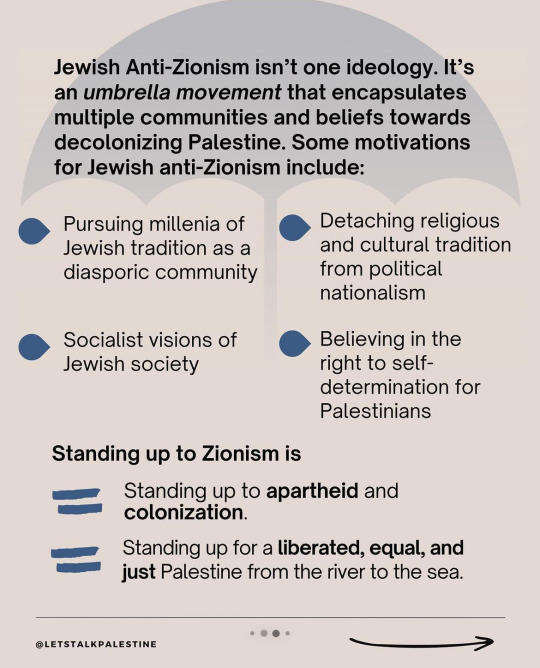
Image 9: Semi-transparent image of an umbrella behind the title text is "Jewish Anti-Zionism isn’t one ideology. It’s an umbrella movement that encapsulates multiple communities and beliefs towards decolonizing Palestine. Some motivations or Jewish anti-Zionism include:
1. Pursuing millenia of Jewish tradition as a diasporic community
2, Detachibng religious and cultural tradition from political nationalism.
3. Socialist visions of a Jewish Society.
4. Believing in the right to self-determination for Palestinians
Standing up to Zionism is:
1. Standing up to apartheid and colonization.
2. Standing up for a liberated, equal, and just Palestine from the river to the sea.

Image 10: An ending quote, and call to action, by the Anti-Zionist League. It says: "Jewish Men! Jewish Women! Zionism wants to throw us into a dangerous & hopeless adventure. Zionism contributes to making Palestine uninhabitable. Zionism wants to isolate us from the Egyptian people. Zionism is the enemy of the Jewish people. Down with Zionism! Long live the brotherhood of Jews and Arabs!" --The Anti-Zionist League. End ID.
#israel#jewish#jews#jumblr#palestine#resources#history#resistance#genocide#instagram#ethnic cleansing#activism#zionism#anti zionism#socialism#colonialism#colonization#judaism#free palestine
1K notes
·
View notes
